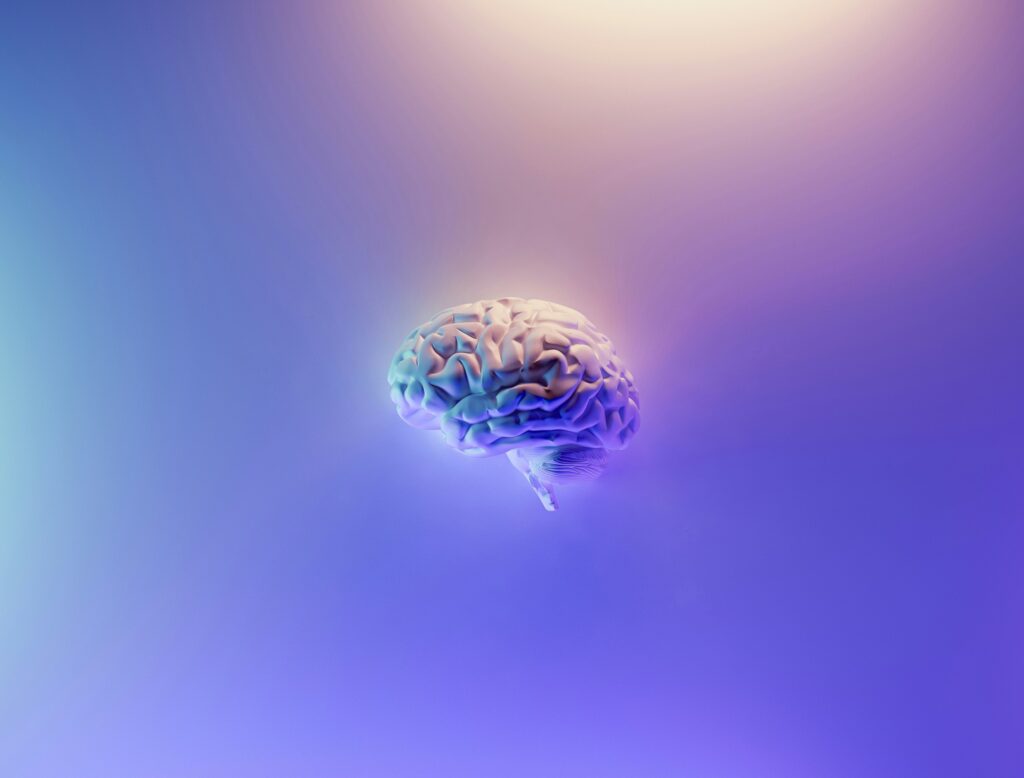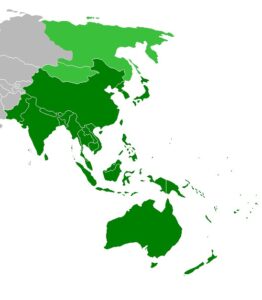By Kimneicheing Houkip
Neuropsychology of Opioid Use Disorder
Opioids are a sort of medication used to treat and manage pain. (Cohen B., 2023) They are composed of chemicals that may be found in natural, semi-synthetic, or fabricated states. These chemicals interact with receptors in the body and brain and act to reduce pain perception. Opioids are generally prescribed, therefore, to treat acute and chronic pain. They are used also in active-phase cancer treatment, palliative care and end-of-life care. While reducing the perception of pain, opioids bring about an extreme sense of euphoria which is a major cause of its addictive nature. However, once the pleasurable feelings fade out with time after continuous use, users become tolerant of them and try to regain that euphoria or “high” by taking them more frequently and in larger amounts. This then leads to varying degrees of addiction and cessation results in withdrawal symptoms.
The American Psychological Association specifies that Opioid use disorder (OUD) consists of a pattern of opioid use that is problematic and leads to significant distress and dysfunction. Symptoms include failure or inability to quit, misusing more than intended, and excessive cravings. It may consist of tolerance for the drug and showing symptoms of withdrawal.
Prevalence
A report given by The Ministry of Social Justice and Empowerment, Government of India titled, “Magnitude of Substance Use in India, 2019.” has found that opioid use in India is 2.1% of the country’s population which is three times the global average. (Om Prakash Singh, 2020) Opioid usage varies across Indian states with Uttar Pradesh having the highest number of people with opioid use disorders. Mizoram and Nagaland stand as the worst affected states. (Singh, Rao, 2021)
Singh & Rao notes that India may be “going through an opioid epidemic” (Singh, Rao, 2021) This is no surprise as the country is located between the world’s two main illicit opium-producing regions, the “Golden Crescent” and the “Golden Triangle,” making it susceptible to being the route and destination of the substances. Moreover, India is itself one of the biggest legal opium producers which is why it is no surprise that India has a well-established pattern of opioid drug use. As a result, opioid dependence is a significant problem in many areas of India. (United Nations Office on Drugs and Crime, n.d. 2005)
Causal Factors
Though the exact cause of opioid misuse is still unknown, factors that may contribute to it include family history, environmental and lifestyle factors, as well as how opioids affect a person’s brain. The use of drugs causes chemical changes in the brain, behaviour, and motivational hierarchy in a process called neuroplasticity (Gold et. al, 2020) Neuroplasticity is “the ability of the nervous system to change its activity in response to intrinsic or extrinsic stimuli by reorganising its structure, functions, or connections.”(Matt Puderbaugh; Prabhu D. Emmady., 2023)
Neurotransmitters like dopamine can be lacking in patients, which increases their propensity to seek out external sources of endorphins. Given that these drugs bring about intense feelings of pleasure and act as burst dopamine by triggering the same biochemical processes of reward in the brain, people may use opioids to self-correct this shortcoming. Constant rewards-seeking behaviour like long-term self-administering opioids leads to a decrease in dopamine receptors, leading to a decrease in sensitivity to rewarding stimuli.(Wise & Robble, 2020; Koob, 2020) Moreover, it leads to alterations in brain functions with negative side effects such as dysphoria, anhedonia, and depression. (Lee et. al, 2023) Individuals with substance use disorder find it extremely challenging to maintain abstinence as it involves resisting powerful cravings and habitual behaviours.(Beaulieu et al. 2021; Parvaz et al. 2022) Aversion plays a role in addiction where users drive out unpleasant feelings (withdrawal symptoms) to avoid discomfort. (Wise; Robble, 2020)
Several researches show that a patient has a greater likelihood to develop an opiate use disorder (OUD) if they have first-degree relatives who suffer from a substance use disease (SUD) Patients with opioid use disorders who are exposed to opioid usage may be more susceptible to developing drug addiction disorders. (Dydyk et. al. 2024) Peer relationships or a doctor’s prescription for a prior injury may have an environmental influence on opiate addiction. As well as individuals with histories of childhood trauma mental distress, and abuse, patients with comorbidities are prone to engage in substance misuse (Cruden and Karmali 2021) Opioid dependence can be physical, mental, or even both. According to studies, even the first dose can have physiologic effects that increase a person’s risk of developing an opioid use problem. Users can become physically dependent on opioids in as little as 4 to 8 weeks of opioid use; with the body beginning to struggle to function without them and an abrupt cessation leading to the experience of withdrawal symptoms. Because these sentiments are so strong, utilising opioids to prevent withdrawal is strongly driven by them (Wise; Robble, 2020)
Effects
The use of opioids in the United States (U.S.) and other countries led to a large number of opioid use disorders (OUD). A recurrent disorder driven by neural circuits that inflict detrimental emotional states and trigger relapses (Strang et al., 2020) and could lead to overdose (Schiller et al., 2021). Patients with opioid use disorder often show cognitive deficits (Blackwood, 2021) Opioid use affects memory (verbal, episodic, and working memory), fluency, and decision-making abilities. Studies show that toxic levels of oxycodone, which is a type of opioid, can cause damage to the brain of both children and adults, with MRI scans exhibiting grey and white matter defects. OUD also leads to damage to neuronal axons. (Blackwood et. al, 2021) Recent studies delve into certain brain cells, called glial cells, that affect addiction and worsen opioid effects through inflammation, disrupting brain balance and increasing pain sensitivity. (Spencer et. al, 2022) Addiction impacts the brian way beyond the reward system to severely damage the prefrontal cortex (PFC) which is responsible for higher-order functioning (Cecili et. al, 2022) Mortality in opioid dependence is generally caused by respiratory depression, and a significant amount of drug-related deaths are related to opioid overdoses. (Michael Soyka, 2020)
Management
Management and treatment strategies for opioid use disorder (OUD) aim to improve physical as well as mental health and curtail overdose. The approaches include therapeutic interventions, medication-assisted treatments or pharmacotherapy. Individual and group counselling sessions support self-control and are cost-effective, while nonopioid treatments and education promote alternative pain management. (Dydyk, 2024) Regarding non-pharmacological treatments, Cognitive Behavioral Therapy (CBT) has remained popular since the 1970s. A study conducted on 1,400 patients, demonstrates CBT’s effectiveness in managing OUD.Its techniques include cognitive restructuring, prevention of relapse, and contingency management. (Alya Attiah Alghamdi, 2023)
Scientists believe that boosting the protective functions of glial cells with targeted treatments could help prevent further brain damage. Nanotechnology, which can deliver drugs precisely to the body, boost the protective layer of glial cells, assures ways to reinforce treatments and reduce the impact of opioid addiction. (Spencer et. al, 2022) Buprenorphine is a synthetic opioid that was first developed in the late 1960s. It is useful in substitution therapy by replacing stronger opioids to manage addiction (Kumar R. et. al, 2024) A study conducted on 40 885 adults with opioid use disorder showed that Methadone and buprenorphine led to a reduction and overdose in opioid-related morbidity. (Wakeman SE, 2020) Methadone and buprenorphine aid in alleviating symptoms of withdrawal, meanwhile, another medication naltrexone blocks opioid effects. It has been found that methadone provides the most effective treatment (Bell, J. et al, 2020)
References
Alexis C. Spencer, Bapurao Surnar, Nagesh Kolishetti, Michal Toborek, Shanta Dhar, Restoring the neuroprotective capacity of glial cells under opioid addiction, Addiction Neuroscience, Volume 4, 2022, 100027, ISSN 2772-3925, https://doi.org/10.1016/j.addicn.2022.100027.
Attiah, A. A. (2023). Cognitive behavioral therapy treatment for drug addiction. Journal of Addiction Therapy and Research, 7(1), 005–007. https://doi.org/10.29328/journal.jatr.1001025
Bell J, Strang J. Medication Treatment of Opioid Use Disorder. Biol Psychiatry. 2020 Jan 1;87(1):82-88. doi: 10.1016/j.biopsych.2019.06.020. Epub 2019 Jul 2. PMID: 31420089.
Bhrigupati Singh, Ravindra Rao, Is there an opioid epidemic in India?, Journal of Public Health, Volume 43, Issue Supplement_2, October 2021, Pages ii43–ii50, https://doi.org/10.1093/pubmed/fdab322
Blackwood, C. A., & Cadet, J. L. (2021). The molecular neurobiology and neuropathology of opioid use disorder. Current Research in Neurobiology, 2, 100023. https://doi.org/10.1016/j.crneur.2021.100023
Ceceli AO, Bradberry CW, Goldstein RZ. The neurobiology of drug addiction: cross-species insights into the dysfunction and recovery of the prefrontal cortex. Neuropsychopharmacology. 2022 Jan;47(1):276-291. doi: 10.1038/s41386-021-01153-9. Epub 2021 Aug 18. PMID: 34408275; PMCID: PMC8617203.
Cohen B, Ruth LJ, Preuss CV. Opioid Analgesics. [Updated 2023 Apr 29]. In: StatPearls [Internet]. Treasure Island (FL): StatPearls Publishing; 2024 Jan-. Available from: https://www.ncbi.nlm.nih.gov/books/NBK459161/
Cruden, Gracelyn & Karmali, Ruchir. (2021). Opioid misuse as a coping behavior for unmet mental health needs among U.S adults. Drug and Alcohol Dependence. 225. 108805. 10.1016/j.drugalcdep.2021.108805.
Dydyk AM, Jain NK, Gupta M. Opioid Use Disorder. [Updated 2024 Jan 17]. In: StatPearls [Internet]. Treasure Island (FL): StatPearls Publishing; 2024 Jan-. Available from: https://www.ncbi.nlm.nih.gov/books/NBK553166/
Gold, M. S., Baron, D., Bowirrat, A., & Blum, K. (2020). Neurological correlates of brain reward circuitry linked to opioid use disorder (OUD): Do homo sapiens acquire or have a reward deficiency syndrome? Journal of the Neurological Sciences, 418, 117137. https://doi.org/10.1016/j.jns.2020.117137
Kumar, R., Viswanath, O., & Saadabadi, A. (2024, June 8). Buprenorphine. StatPearls – NCBI Bookshelf. https://www.ncbi.nlm.nih.gov/books/NBK459126/
Lee, Y. K., Gold, M. S., Blum, K., Thanos, P. K., Hanna, C., & Fuehrlein, B. S. (2024). Opioid use disorder: current trends and potential treatments. Frontiers in Public Health, 11. https://doi.org/10.3389/fpubh.2023.1274719
Schiller EY, Goyal A, Mechanic OJ. Opioid Overdose. In: StatPearls. StatPearls Publishing, Treasure Island (FL); 2023. PMID: 29262202.
Singh OP. Substance use in India – Policy implications. Indian J Psychiatry. 2020 Mar-Apr;62(2):111. doi: 10.4103/psychiatry.IndianJPsychiatry_207_20. Epub 2020 Mar 17. PMID: 32382167; PMCID: PMC7197827.
Soyka, M. (2020, December 16). Recent Advances in the Treatment of Opioid Use Disorders. Crimsonpublishers. https://crimsonpublishers.com/tnn/fulltext/TNN.000572.php
Strang, J., Volkow, N.D., Degenhardt, L. et al. Opioid use disorder. Nat Rev Dis Primers 6, 3 (2020). https://doi.org/10.1038/s41572-019-0137-5
Parvaz, Muhammad & Rabin, Rachel & Adams, Faith & Goldstein, Rita. (2022). Structural and Functional Brain Recovery in Individuals with Substance Use Disorders During Abstinence: A Review of Longitudinal Neuroimaging Studies. Drug and Alcohol Dependence. 232. 109319. 10.1016/j.drugalcdep.2022.109319.
Puderbaugh, M., & Emmady, P. D. (2023, May 1). Neuroplasticity. StatPearls – NCBI Bookshelf. https://www.ncbi.nlm.nih.gov/books/NBK557811/#
Wakeman, S. E., Larochelle, M. R., Ameli, O., Chaisson, C. E., McPheeters, J. T., Crown, W. H., Azocar, F., & Sanghavi, D. M. (2020). Comparative Effectiveness of Different Treatment Pathways for Opioid Use Disorder. JAMA Network Open, 3(2), e1920622. https://doi.org/10.1001/jamanetworkopen.2019.20622
Wise, R. A., & Robble, M. A. (2020). Dopamine and Addiction. Annual Review of Psychology, 71(1),
79–106. https://doi.org/10.1146/annurev-psych-010418-103337






